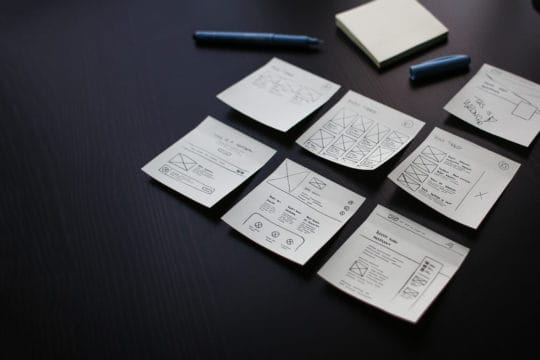Designing a website is a huge task. It can take anywhere from three weeks when using a pre-built template, to three to five months when creating a custom coded website. There are many decisions to be made, and sometimes it can seem quite daunting. It is easy in this situation to get lost, go on tangents, or even be unable to begin. How do you focus on what is important? How do you know where to start and how to stay on track?
What you need to do is refocus. Start from the basics before you get caught up in the details and make sure that you create a design with a strong, functioning, and converting baseline to grow from.
Ask yourself these four simple questions, and you will be well on your way to refocusing your website design:
1. Do I know my audience?
This question is possibly the most important that you could ask yourself while redesigning a website. Knowing your audience will dictate every decision that you make when you are looking at the design of your website. You can narrow in your focus on your website redesign by making sure that you have narrowed in on your audience. That way, every time you take a step forward, you can simply ask yourself if what you are building will translate over to the client or customer. Knowing who you’re building for will help you to create a great website right from the beginning. If you do not address this aspect then you will definitely be making changes sooner rather than later when you realize your design is not operating successfully. Some key points to consider are your audience’s demographics, likes and dislikes, ability to navigate the internet and websites, style, tone, visual preferences, etc. The more in-depth customer profiles that you can create, the more you have to go off of.
 2. What does my website need to do?
2. What does my website need to do?
This question might seem super basic, and for this reason most people will surpass brainstorming on this idea. What your website will be used for will dictate how it needs to be designed. A website that will be changed frequently and have a lot of content uploaded will need to be a Content Management System (CMS) website that allows control and changes in the future. However, if you need to make money and sales through your website, you will need eCommerce integration and a system that allows for payment online.
What is the main purpose of your website? Is it informational or for ecommerce? Is it to generate leads or sell a product?
Aside from the end goal of the website, you should also take note of all the functions it will need. Do you want customers to be able to schedule appointments online, or learn more about your company? You will need to refer back to these in every step of the design process as well.
3. What is my competition doing better?
The first thing that you should do after defining who and what your website is meant for, is to check out the competition. How are they going about accomplishing the end goal? Make sure to take notes on what you like about their websites, as well as what you don’t like. Then, note the pieces that you might want to emulate on your own site and why. How will these pieces help you achieve your goal? How can you make them successful for your website or even give them a twist? For example, maybe they have an eCommerce system that works really well functionally, but is missing the ability to remember an order and keep the customer logged in. These are the small details that you must scour your competitors’ websites to find. Some other aspects to investigate are how they have set up their navigation, as well as where and how they are directing the browser’s attention. Do they have simple websites, or do they have dozens upon dozens of pages?
4. How do I make my site the most accessible to my customer or client?
Accessibility for the customer is important because it means making the navigation easier for them on your website. The easier it is to use the website, the more likely that people will not only stay on your website, but also want to return. This has a huge impact on winning customers or clients from your competition. If you have a mobile responsive design, containing easy drop down menus with self-explanatory, organized, and well-labeled pages – then your site will have an easy access point. However, if you design your site without thinking what would best fit the customer, or design it with what would best fit yourself, then you might be heading towards a more convoluted and vague website that doesn’t offer as much value as it could. When thinking about this, it is also important to ask yourself which features are most important and which you can leave behind. While a beautiful parallax website with rich animations can be nice, it’s best to only stick to what you need – not what you want. Sometimes all the bells and whistles of a modern website aren’t necessary and can even complicate the user experience. Focus on wowing them with your product or service by highlighting the value points through your design, not by adding every last possible fun design aspect. Remember, less is more when it comes to the visual aspect of a website design.

Christopher Dill is the lead SEO ninja at The Dill Design. He has a passion for helping businesses grow through digital inbound marketing and increasing organic sales and conversions. Chris also manages responsive web design projects for SMB’s.





I think these are all really good tips that are on-point. Number one is probably the most important. Knowing your audience is key to having a successful website. You want a website that your audience will be drawn to and want to visit often! Designing something that will keep bringing people back is what company should be looking for.